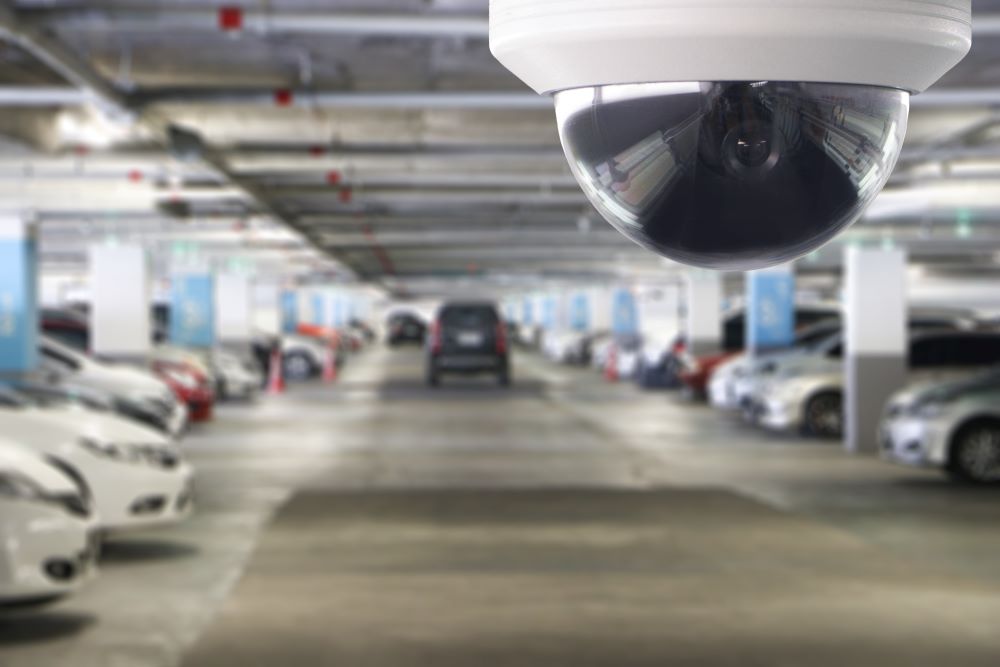The numbers have been crunched for this year’s Campus Safety Video Surveillance Survey, and 94% of the 200 K-12 schools/school districts, institutions of higher education, and healthcare facilities that responded have one or more video surveillance system on their campus. These findings are consistent when compared to Campus Safety’s surveys from previous years. Additionally, they are very similar to findings from the National Center for Education Statistics, which found that 91% of public schools use video security cameras.
What’s particularly notable about this year’s survey is that, although 6% of participants said they don’t have a security camera system yet, all of them are considering the purchase of a system in the next two years.
This is the first time since Campus Safety began conducting surveys on security cameras that no participants that don’t have a video surveillance system said they are not looking to purchase one in the next two years. In 2020, 4% of respondents said they didn’t have security cameras and weren’t planning to make a purchase, and last year that percentage dropped to 3. This year, the percentage dropped to zero.
It appears that even the organizations that were the most hesitant or unable to adopt video surveillance in the past have decided to take the leap and at least consider buying a system.
This finding isn’t surprising considering the usefulness of security cameras. Most of the colleges, hospitals, and schools that do have security cameras use them frequently, according to the 2022 Campus Safety Video Surveillance Survey.
“We solve cases daily with our camera systems… many felony cases. It is worth the money to have a good camera system,” said one 2023 survey participant.
Another respondent said they clear about 90% of their cases with cameras.
Judging by the numerous successes mentioned by this year’s survey participants (see Comments from the 2023 Campus Safety Video Surveillance Survey Participants), camera systems continues to be a very useful tool for schools, universities, and hospitals.
Additionally, artificial intelligence (AI), the cloud, and license plate recognition (LPR) can bolster the effectiveness of campus cameras, and this year’s participants appear to be more willing than ever before to adopt these technologies.
More Campuses Adopting AI, the Cloud, and LPR
AI has been receiving a lot of attention from the general public lately, and that attention is reflected in this year’s survey responses. Seven percent more of this year’s participants than in 2021 said they’ve purchased “artificial intelligence related to video surveillance” over the past two years… 28% vs. 21%, respectively. Additionally, 7% more now say they are considering acquiring these solutions in the next two years (32% vs. 25%).
Another aspect of video surveillance that appears to be gaining in popularity is the cloud. More than one in three of this year’s survey takers (36%) said they’ve bought “cloud video surveillance solutions” in the past two years, which is 8% more than in 2021. As for the future of the cloud, demand for it remains the same as in 2021: 29% of 2023 survey participants are considering acquiring this solution in the next two years.
LPR is also getting more popular, with 34% of this year’s respondents saying they’ve purchased this equipment recently. That’s 5% more than two years ago. Additionally, more than one in three of 2023 survey takers (37%) are considering purchasing LPR in the next two years. That’s 6% more than in 2021.
An example of LPR’s usefulness is highlighted in a comment from one of this year’s survey participants, who said their campus LPR system identified a person wanted in connection with a murder.
New to this year’s questionnaire was weapons/gun detection. More than one in five participants (23%) have purchased this solution over the past two years, and 36% are considering doing so by 2025. Considering the recent rise in active shooter events in the U.S., this trend is not surprising.
Although newer technologies like AI, the cloud, LPR, and weapons detection are gaining a lot of traction, campus investments in the more traditional type of equipment continue to grow as well.
Historically, fixed security cameras have been the most popular video surveillance equipment purchased by campuses, and that trend continues. Eighty-four percent of 2023’s participants have bought cameras in the past two years. That’s 5% more than in 2021, when 79% indicated they had recently made a purchase of this type of equipment. More than half of this year’s respondents (57%) also said they are considering buying more fixed cameras in the next two years, which is practically the same as two years ago (55%.)
Video management software (VMS) was the second most popular video surveillance solution purchased by respondents over the past two years, with 53% saying they’ve recently bought VMS. More than one in four respondents (27%) said they are considering buying more VMS solutions in the next two years.
Network video recorders (NVRs) also continue to be popular, with 48% of respondents saying they have recently purchased this type of technology. In 2021, that percentage was 47. More than one in four 2023 respondents (27%) said they are considering buying more NVRs by 2025.
Although digital video recorders (DVRs) are an older video surveillance technology, 36% of survey respondents said they’ve bought this type of equipment in the past two years. That said, only 19% are considering purchasing more in the next two years. That’s 7% less than in 2021.
Video Surveillance System Coverage and Quality Are Improving
Compared to two years ago when survey participants were asked to rate the overall coverage of their video surveillance systems, 9% more now rate it as “excellent.” In 2021, 15% rated it as “excellent,” while this year, 24% did so.
But when broken down by sector, at 32%, K-12 respondents were much more likely to rate their security camera coverage as “excellent” compared to only 13% of university/college and healthcare participants. However, 41% of all three sectors rated their coverage as “good.”
On the flip side, 47% of institutions of higher education and healthcare survey participants rated their coverage as “fair,” “below par,” or “poor,” compared to only 23% of school or school district respondents.
More respondents now than in 2021 are very satisfied with the quality of their video surveillance systems. This year, 27% of participants rated their systems as “excellent” compared to only 15% two years ago when we asked this question.
Two out of five (40%) of all participants rated their security camera system quality as “good,” which is seven points less than in 2021. However, when the “excellent” and “good” responses this year were combined, the total came to 67%, compared to only 62% two years ago.
Campuses Experiencing Fewer Maintenance Issues
Over the years, Campus Safety has asked about challenges related to the installation of security cameras, older video surveillance systems, integration/interoperability, managing a large number of cameras on campus, and finding good integrators. Since 2019, the responses have been remarkably consistent for the most part.
However, the maintenance of campus video surveillance systems is a bit less problematic than two years ago. More than a third of this year’s survey participants (34%) said maintenance was “little or no challenge” for them. That’s eight percentage points more than the 26% who marked this option in 2021.
On the other end of the spectrum, those who said maintenance was “extremely” or “very” challenging for them dropped from 26% two years ago to 20% this year.
In close correlation with the issue of maintenance is the age of campus cameras. This year, 42% of respondents said the issue of “Many of our cameras are old and don’t capture images we can use” was “little or no challenge.” That’s 5% more than two years ago when only 37% of survey participants marked this option.
Systems integration is now the biggest thorn in the side when it comes to video surveillance technology. One in four of this year’s respondents said the issue of “Our video system(s) isn’t integrated with other public safety systems, such as access control, intrusion and fire” is either “extremely challenging” or “very challenging” for them. Keep in mind, however, that 25% is much better than the 34% of 2019 survey takers who said integration was extremely or very challenging.
Staff Training, Management Buy-in Has Improved
This year, the responses about the level of challenges associated with policies, procedures, and people were very similar to 2021’s:
- 17% said “Policies supporting our video surveillance system(s) either don’t exist or the ones we have need to be updated” was an “extremely” or “very” challenging issue for them.
- 15% said not having enough staff to operate their security camera solutions was “extremely” or “very” challenging.
- 57% said buy-in from students, faculty and/or staff posed little or no challenge.
- 54% said IT department buy-in, support and cooperation posed little or no challenge.
Some positive trends did come to light.
Only 9% of respondents said they found “extremely challenging” or “very challenging” the issue of staff not knowing how to effectively use their video system(s). That’s half of the 18% of respondents who believed this issue was extremely or very challenging in 2021.
Buy-in from management/administration is also improving. This year, 58% of respondents said they had “little or no challenge” with management/administration buy-in, which is nine percentage points more than two years ago when it was 49%.
Campus Safety thanks the 200 campus protection professionals who participated in our survey. We truly value your input!
Sponsored by:
















